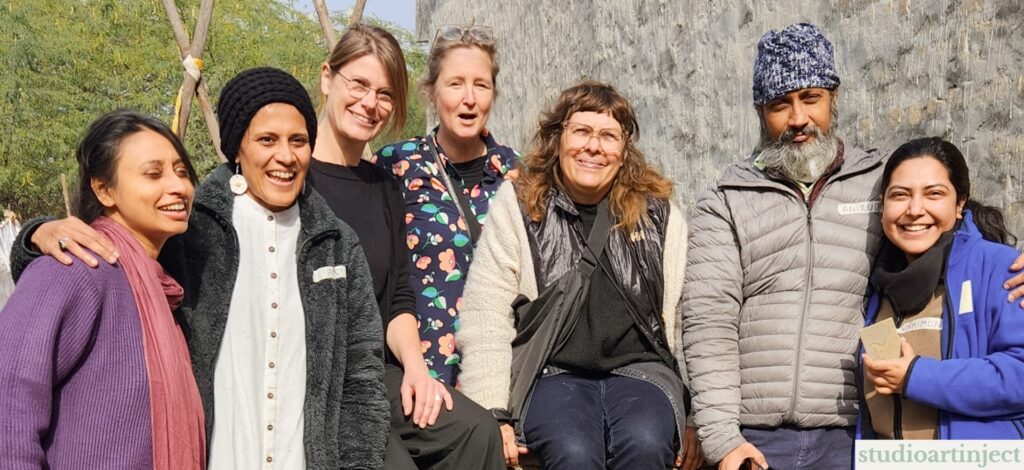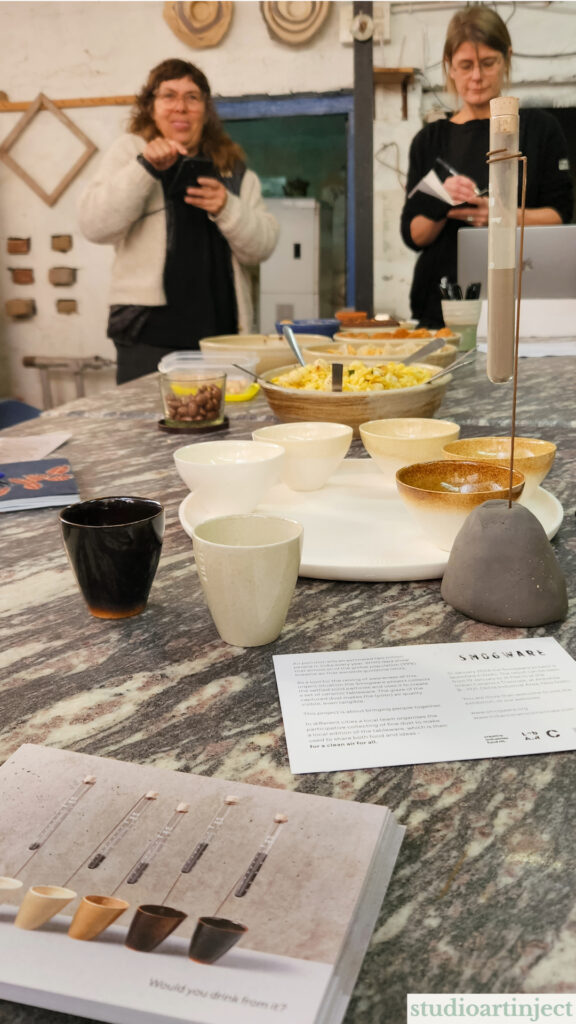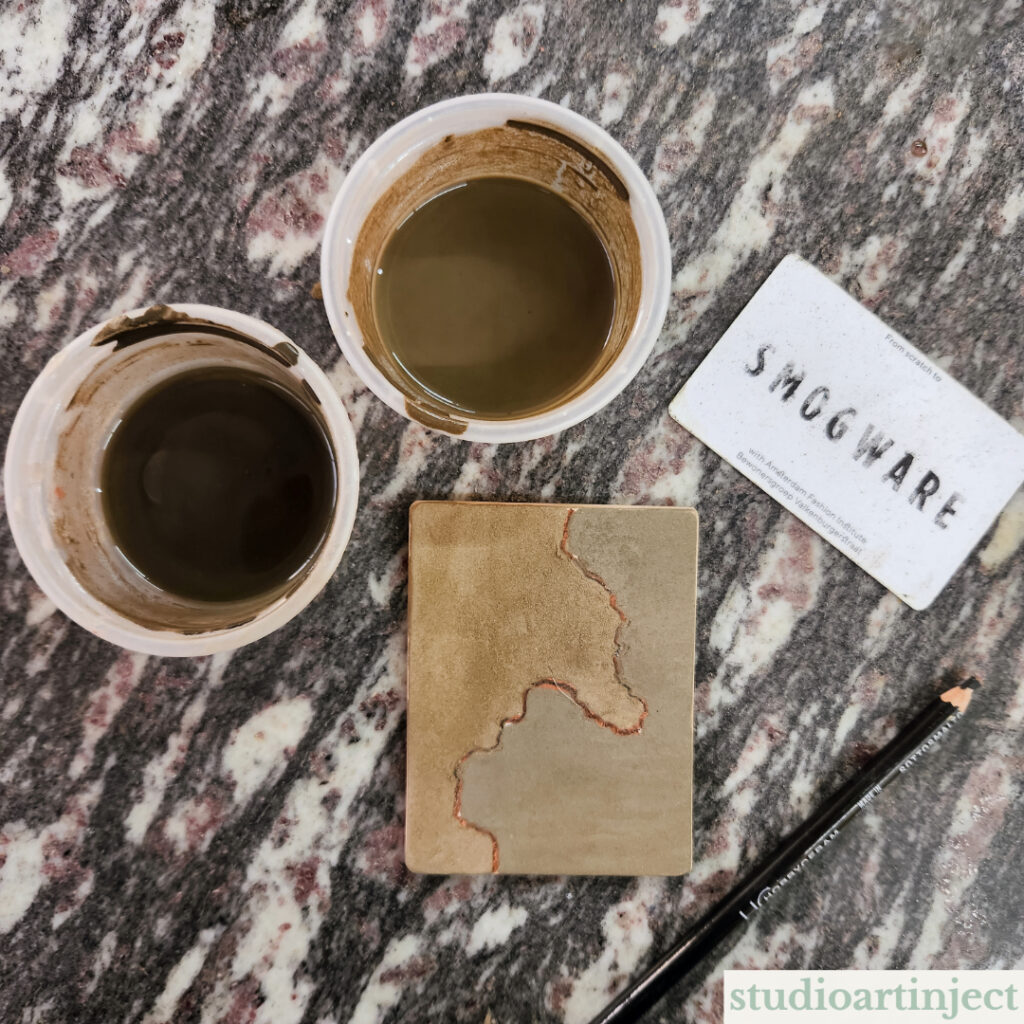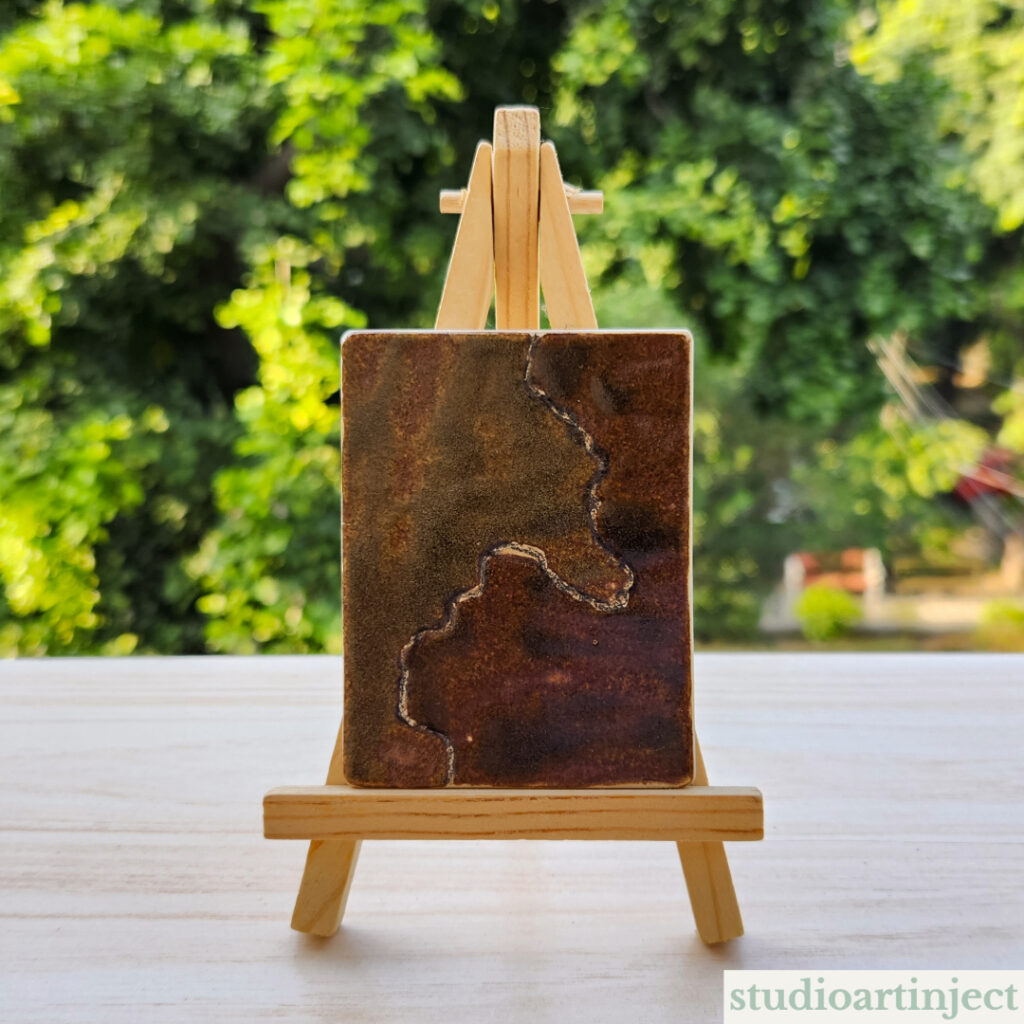This month I had the chance to meet and learn from Iris de Kievith & Fiona de Bell of the Smogware Project. We learnt about the Project, how to collect fine dust and turn it into a ceramic glaze, and discussed ways in which we can reduce our carbon footprint.
The Smogware team along with the potters of Naveen Chhaya designed kulhads (smog tea ware), which were created using the smog collected from Delhi, and were displayed at the Indian Ceramic Triennale 2024.

About Lab AIR
Lab AIR is a design studio started by Iris de Kievith and Annemarie Piscaer. Lab AIR connects worlds of science, art, industry, activism, design, politics, policy, care and education. It is a collaboration aimed at making the abstract problems that occur in the air visible and experienceable – particulate matter, nitrogen, CO2. As a start it helps to actually see, feel or taste the invisible elements directly around us. First see and feel. Then believe and act.
What is the Smogware Project?
Smogware is Lab AIR’s first project with public engagement at its core and the intention of starting a dialogue and provoking behaviour change in lieu of the increasing levels of air pollution.
The project entails harvesting smog dust to use as glazes for ceramic tableware. Using smog dust to glaze ceramicware makes the particulate matter in dust visible and the poor air quality tangible.
Smogware has collaborated with researchers and ceramic makers from the Netherlands, Milan, Berlin, Beijing, London, and now Delhi. Like they say themselves, ‘Smogware aims to empower citizens how to harvest their local dust and use it to investigate the colour of a local smog-glaze and air quality.’

Why Smogware?
Smogware is intended to be a communicative instrument. The glaze made from dust makes the state of air quality visible and tangible. And since this glaze is put on tableware, it becomes a starting point for conversation on what we can do to improve the air quality and combat air pollution.
How is dust turned into glaze?
During the workshop conducted by Iris de Kievith & Fiona de Bell at the Naveen Chhaya Pottery Studio, we looked for dry settled dust (caused by vehicular pollution) at areas in South-West Delhi. We collected the same using Lab AIR’s special design harvest tool, a biodegradable card, which helps in scraping the pollution of the surface.
This smog dust was then sieved to get a fine powder, and mixed with a transparent ceramic glaze which acts as a medium for the particulate matter to stick to bisque-ware.
The chemical composition of PM10 fine dust (diameter smaller then 10µm) overlaps with the elements contained in ceramic glazes. Therefore, after the tableware is fired at high temperatures, the glazes made with dust become safe to use for tableware.
The composition of the dust from different areas is determined by the types of pollutants existing in the area, which further determine the colour of the glaze.


Indian Ceramics Triennale x Smogware Project
For Smogware Delhi Edition, Iris de Kievith & Fiona de Bell collaborated with my pottery teachers and ceramists Arti Paliwal & Aniruddh Sagar.
They made thali sets and kulhads using recycled clay by Earth Tatva (Recycled Ceramic Clay), and used the smog dust collected from high-traffic streets in Delhi to use as glaze for these pieces. The pieces were coated with varying amounts of smog dust representing the amount of dust inhaled by an average person living in Delhi over a period of 10, 25, 45 years.
ICT further collaborated with Cascoland to serve lunch and chai in this smogware which was then used as a tool to have conversations with the viewers about air pollution and sustainable food production/ consumption.